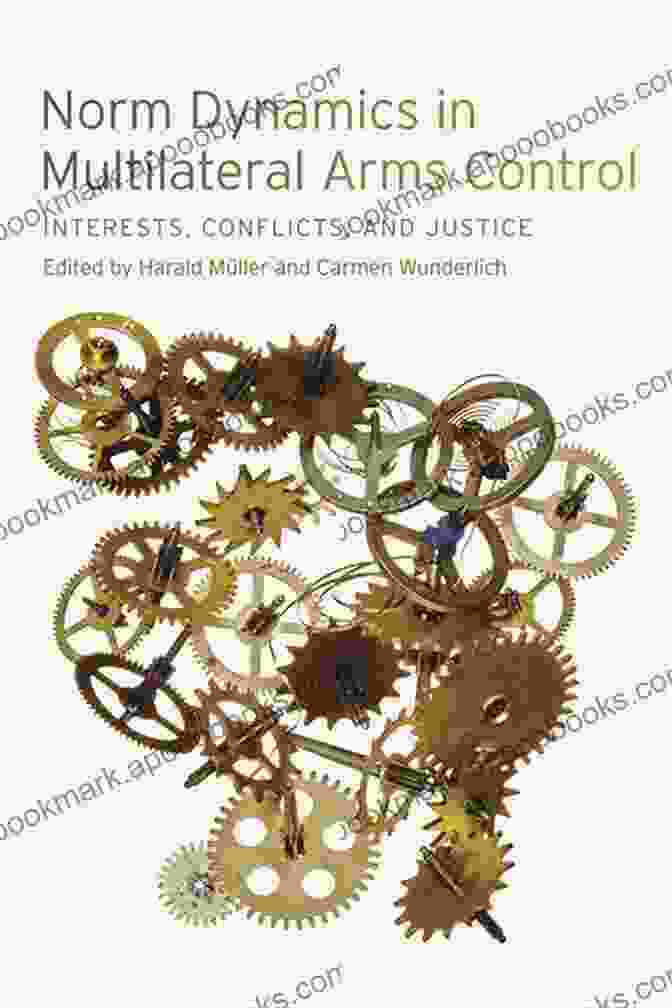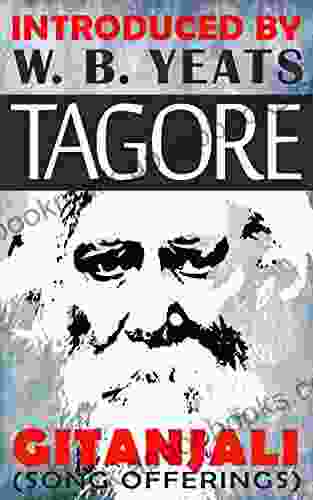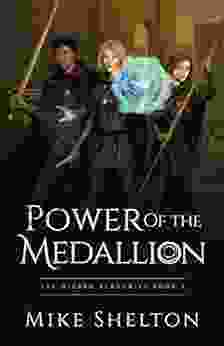Norm Dynamics In Multilateral Arms Control

5 out of 5
| Language | : | English |
| File size | : | 1862 KB |
| Text-to-Speech | : | Enabled |
| Screen Reader | : | Supported |
| Enhanced typesetting | : | Enabled |
| Word Wise | : | Enabled |
| Print length | : | 571 pages |
An In-Depth Exploration of International Relations and Arms Control

The realm of international relations is a complex and ever-evolving landscape, where norms play a pivotal role in shaping the behavior of states. In the context of multilateral arms control, norms serve as guiding principles that influence the development and implementation of arms control treaties, fostering cooperation and maintaining global security.
This article delves into the intricacies of norm dynamics in multilateral arms control, exploring their formation, evolution, and impact on disarmament efforts. By examining real-world case studies and drawing upon a wealth of scholarly research, we will gain a comprehensive understanding of the interplay between norms and the pursuit of global peace and security.
Understanding Norms in International Relations
Norms, in the context of international relations, refer to shared expectations, rules, or principles that guide the behavior of states. They emerge from repeated interactions and shared values, and over time, they become widely accepted and internalized by states.
Norms can be either explicit, such as those enshrined in international treaties, or implicit, such as unwritten codes of conduct. They can range from broad principles like the prohibition of the use of force to more specific guidelines on the conduct of warfare or the development of certain types of weapons.
The Role of Norms in Multilateral Arms Control
In the realm of arms control, norms play a crucial role in facilitating cooperation and maintaining global security. They provide a framework for states to engage in arms control negotiations, establish common goals, and monitor compliance with treaties.
For example, the norm against the proliferation of nuclear weapons has been instrumental in preventing the spread of nuclear weapons to additional states. Similarly, the norm against the use of chemical weapons has helped to prevent the use of these horrific weapons in warfare.
Norm Formation and Evolution
Norms do not emerge overnight; they are formed through a gradual process of socialization, persuasion, and learning. States can promote the formation of new norms by advocating for them in international fora, setting positive examples through their actions, and engaging in dialogue with other states.
Over time, norms can evolve and adapt to changing circumstances. This process can be influenced by technological advancements, geopolitical shifts, or the emergence of new challenges. For example, the norm against the use of biological weapons has evolved over time to include the prohibition of the development, production, and stockpiling of biological weapons.
Challenges to Norm Compliance
While norms can be powerful forces for good, they can also face challenges to compliance. States may deviate from norms due to political expediency, security concerns, or a lack of enforcement mechanisms. Enforcing compliance with arms control norms can be particularly difficult, as it often requires intrusive inspections and the willingness of states to cooperate.
Despite these challenges, norms continue to play a vital role in multilateral arms control. They provide a foundation for cooperation, facilitate dialogue, and help to maintain global security. By understanding the dynamics of norm formation and evolution, we can better appreciate their importance and work to strengthen them.
Case Studies: The Impact of Norms on Arms Control
To illustrate the practical impact of norms in multilateral arms control, let's examine two real-world case studies:
1. The Nuclear Non-Proliferation Treaty (NPT)
The NPT is a landmark international treaty designed to prevent the spread of nuclear weapons. It establishes a norm against nuclear proliferation, and it obligates states to refrain from developing, producing, or acquiring nuclear weapons.
The NPT has been highly successful in preventing the spread of nuclear weapons, with over 190 states adhering to the treaty. This can be attributed, in part, to the strong norm against nuclear proliferation that has been reinforced through the treaty.
2. The Chemical Weapons Convention (CWC)
The CWC is a comprehensive international treaty that prohibits the development, production, stockpiling, and use of chemical weapons. It also establishes a norm against the use of chemical weapons in warfare.
The CWC has been instrumental in reducing the global threat of chemical weapons. Since its entry into force in 1997, over 98% of the world's declared chemical weapons stockpile has been destroyed.
Norm dynamics play a vital role in multilateral arms control. They provide a framework for cooperation, facilitate dialogue, and help to maintain global security. By understanding the formation, evolution, and challenges to norm compliance, we can better appreciate their importance and work to strengthen them.
The case studies of the NPT and the CWC demonstrate the concrete impact that norms can have on disarmament efforts. These treaties have helped to establish strong norms against nuclear proliferation and the use of chemical weapons, making the world a safer place.
As we navigate the complexities of international relations in the 21st century, it is more important than ever to recognize the power of norms and to work together to strengthen them. By promoting cooperation, fostering dialogue, and upholding our commitments to international agreements, we can build a more secure and peaceful world for generations to come.
5 out of 5
| Language | : | English |
| File size | : | 1862 KB |
| Text-to-Speech | : | Enabled |
| Screen Reader | : | Supported |
| Enhanced typesetting | : | Enabled |
| Word Wise | : | Enabled |
| Print length | : | 571 pages |
Do you want to contribute by writing guest posts on this blog?
Please contact us and send us a resume of previous articles that you have written.
 Book
Book Novel
Novel Page
Page Chapter
Chapter Text
Text Story
Story Genre
Genre Reader
Reader Library
Library Paperback
Paperback E-book
E-book Magazine
Magazine Newspaper
Newspaper Paragraph
Paragraph Sentence
Sentence Bookmark
Bookmark Shelf
Shelf Glossary
Glossary Bibliography
Bibliography Foreword
Foreword Preface
Preface Synopsis
Synopsis Annotation
Annotation Footnote
Footnote Manuscript
Manuscript Scroll
Scroll Codex
Codex Tome
Tome Bestseller
Bestseller Classics
Classics Library card
Library card Narrative
Narrative Biography
Biography Autobiography
Autobiography Memoir
Memoir Reference
Reference Encyclopedia
Encyclopedia Madison Jones
Madison Jones Peter Carlson
Peter Carlson Edward Humes
Edward Humes S Kay Gandy
S Kay Gandy Dr Yuliya Richard
Dr Yuliya Richard Mandy Magro
Mandy Magro Barry J Simpson
Barry J Simpson Eiji Oguma
Eiji Oguma Susanna Gregory
Susanna Gregory Ed Podesta
Ed Podesta Shamieka Dean
Shamieka Dean Margaret Paul
Margaret Paul Elaine Cunningham
Elaine Cunningham Martin Garbus
Martin Garbus Edward S Greenberg
Edward S Greenberg Jeramy Goble
Jeramy Goble Hamilton Wright Mabie
Hamilton Wright Mabie Leo Hunt
Leo Hunt Cleo Paskal
Cleo Paskal Werner Sonne
Werner Sonne
Light bulbAdvertise smarter! Our strategic ad space ensures maximum exposure. Reserve your spot today!

 William FaulknerPizzicato Polka Clarinet Quintet Score Parts: A Symphony of Wind Music...
William FaulknerPizzicato Polka Clarinet Quintet Score Parts: A Symphony of Wind Music...
 Fernando PessoaUnveiling the Heartfelt Wisdom of Gitanjali: A Poetic Journey of Love, Loss,...
Fernando PessoaUnveiling the Heartfelt Wisdom of Gitanjali: A Poetic Journey of Love, Loss,... Gabriel Garcia MarquezFollow ·12.2k
Gabriel Garcia MarquezFollow ·12.2k Seth HayesFollow ·10.9k
Seth HayesFollow ·10.9k Alex FosterFollow ·2.2k
Alex FosterFollow ·2.2k Mitch FosterFollow ·4.1k
Mitch FosterFollow ·4.1k Alan TurnerFollow ·16.9k
Alan TurnerFollow ·16.9k Ernesto SabatoFollow ·13.6k
Ernesto SabatoFollow ·13.6k Tony CarterFollow ·4.9k
Tony CarterFollow ·4.9k J.R.R. TolkienFollow ·12.5k
J.R.R. TolkienFollow ·12.5k

 Eugene Powell
Eugene PowellFat Cat Stories: Level At Word Family - A Purrfect Start...
Introducing the 'At'...

 William Powell
William PowellUnveiling the Treasures of Russian Poetry: The Cambridge...
Immerse yourself in the...

 Roberto Bolaño
Roberto BolañoUnveiling the Treasures of Beowulf: A Guided Tour with...
: Delving into the...

 Foster Hayes
Foster HayesTransport, Climate Change and the City: Tackling Urban...
Transport is a major...

 Calvin Fisher
Calvin FisherHow To Make It In The Music Industry: The Ultimate Guide...
Are you an aspiring musician with...

 Rick Nelson
Rick NelsonUnveiling the Enigmatic World of Gary Chester's "The New...
Step into a World...
5 out of 5
| Language | : | English |
| File size | : | 1862 KB |
| Text-to-Speech | : | Enabled |
| Screen Reader | : | Supported |
| Enhanced typesetting | : | Enabled |
| Word Wise | : | Enabled |
| Print length | : | 571 pages |








